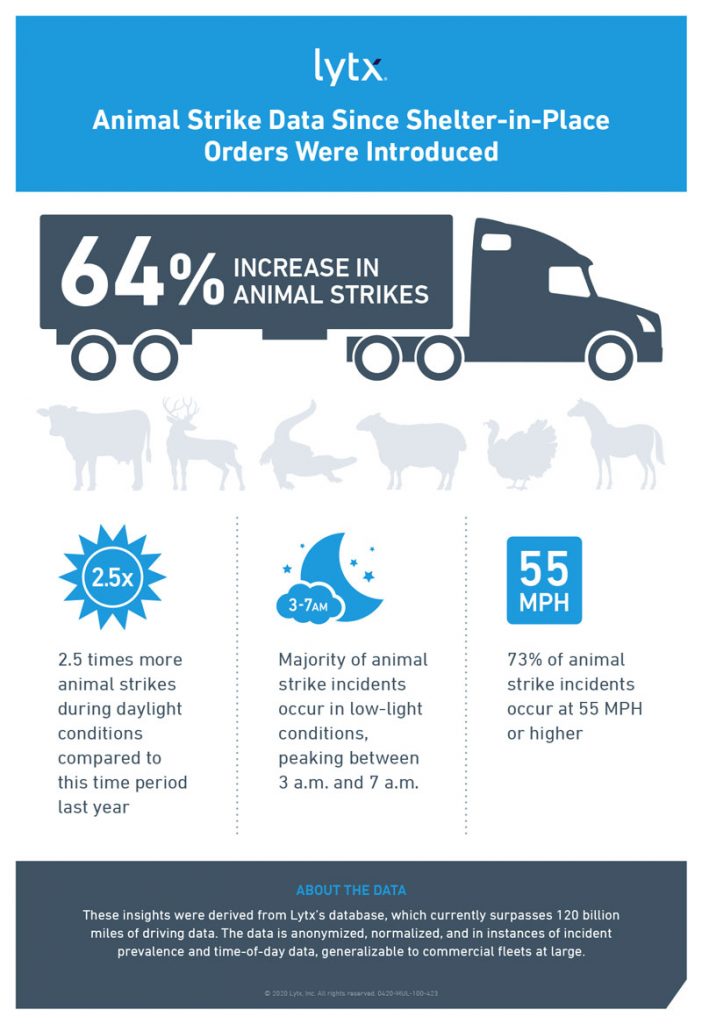There is no doubt the effects of COVID-19 are vast and will be felt for a long time to come in a variety of ways. Believe it or not, this virus is also affecting animals. You might be asking yourself how COVID-19 could do that.
With some cities in Canada reporting up to a 50% decrease in perimeter traffic, animals are feeling less restricted. They are feeling brave enough to roam into cities and cross roads with less risk. With less traffic and noise, animals have less fear. The combination of these two things are increasing the risk of animal collisions for the people that are still on the road, including trucker drivers.
Outside of major cities, the same thing is happening. People are traveling less which means there is less traffic resulting in animals quickly adapting to new migration patterns and seeing the road as their road and not a thing to fear.
Lytx has reported a 64% increase in animal strikes from the same time period in 2019. Which increases trucker driver’s possibility of hitting wildlife 2.5 times. The majority of animal strikes have always happened early morning hours, from about 3AM – 7AM.

In the United States, Lytx reports that in the past six weeks there has been a 19% increase in speed and a 10% decrease in travel time on frequently travelled routes. And ultimately, for the bottom line this is great for the trucking industry but with higher speeds and more frequent animal sightings and strikes it could result in injury, downtime and repair expenses.
Wildlife will never be completely avoided while on the road, so it is the responsibility of the driver to take precautions such as staying alert, maintaining a reasonable speed and slowing down during peak hours. Truck drivers should consider getting a bumper which will help to avoid downtime and damage to their truck if an animal is hit.
Ali Arc bumpers have proved, over the past 30 years, that they prevent downtime and damage to your truck.
If you have any questions, feel free to reach out to us at sales@aliarc.com or call 1-877-725-4272.

